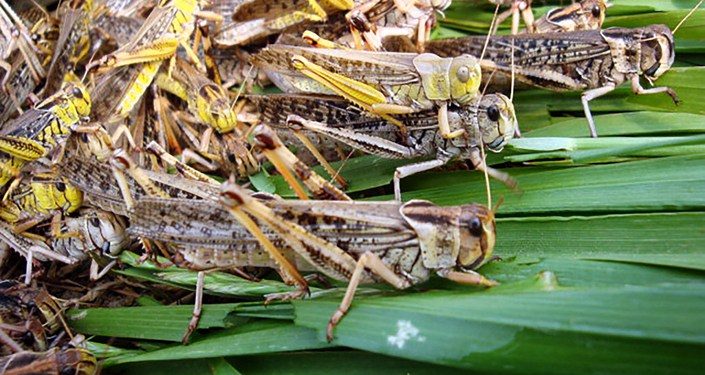Kabul: The UN’s Food and Agriculture Organization (FAO) has warned of a large-scale outbreak of the Moroccan locust across eight provinces in Afghanistan, the country’s ‘wheat basket’.
The sightings of locusts at different development stages have been made in Badakhshan, Badghis, Baghlan, Balkh, Kunduz, Samangan, Sar-e-Pul, and Takhar, with fresh reports coming in from Herat and Ghor provinces.
“The reports of Moroccan locust outbreak in Afghanistan’s wheat basket is a huge concern. The Moroccan locust eats more than 150 species of plants, including tree crops, pastures, and 50 food crops, all of which grow in Afghanistan. It represents an enormous threat to farmers, communities and the entire country,” said Richard Trenchard, the FAO Representative in Afghanistan.
“The last two big outbreaks, 20 and 40 years ago, cost Afghanistan an estimated eight and 25 per cent of its total annual wheat production. Harvest forecasts this year are the best we have seen for the last three years — but this outbreak threatens to destroy all these recent gains and dramatically worsen the food insecurity situation later this year and into next year,” Trenchard added.
The Moroccan locust is ranked among the most economically damaging plant pests anywhere in the world. A full outbreak this year could result in crop losses ranging from 700,000 to 1.2 million metric tonnes of wheat — up to a quarter of the total annual harvest.
This translates to between $280 million and $480 million in economic loss — as of today’s prices in the country.
North and Northeast regions of Afghanistan are prone to Moroccan locust outbreaks.
This year has seen “perfect” conditions for a locust outbreak: drought, over-grazing, very limited locust control, and just the right amount of rainfall in March and April for locusts (approximately 100 mm). These conditions created the ideal environment for locusts to hatch and swarm.
In these parts of Afghanistan, Moroccan locust lays eggs between May and June, depending on environmental conditions, in hilly and rangeland areas. The young locusts hatch from the egg-pods the following year in late March and start feeding on surrounding grasses.
This year the hatching started earlier than usual.
“The alarm bells rang late, but FAO, its incredible NGO partners, local communities, and local authorities sprang into immediate action,” said Trenchard.
“Chemical supplies were low across the country so we were forced to focus on traditional mechanical control methods to reduce the impact of the outbreak.”







































